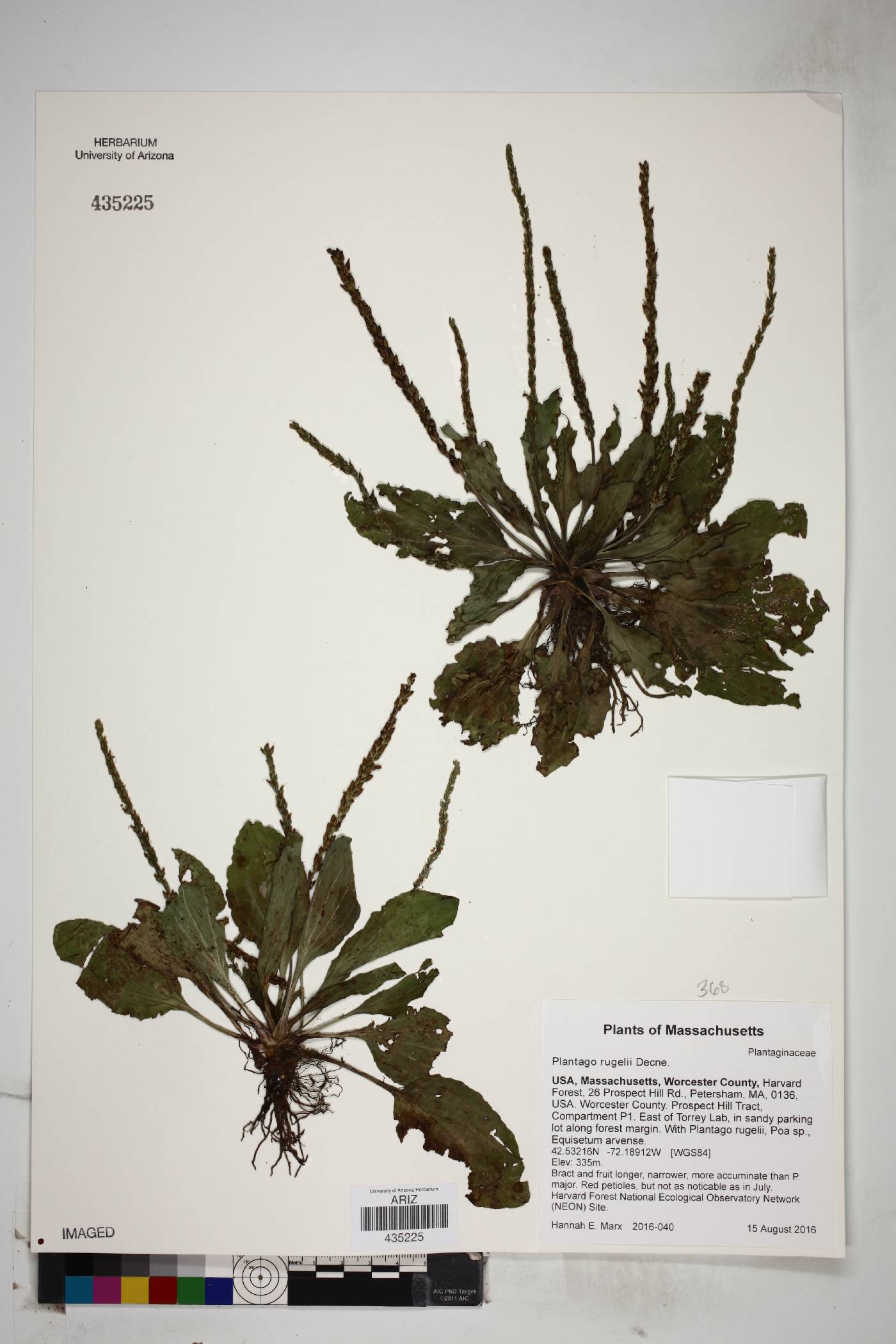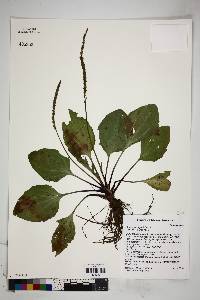|
|
|
|
Family: Plantaginaceae
blackseed plantain
|
Perennial herb with fibrous roots flowering stem 5 - 25 cm tall Leaves: basal, upright or spreading, thick-stalked, 4 - 18 cm long, 1.5 - 11 cm wide, broadly elliptic to broadly egg-shaped with an abruptly contracted base, more or less parallel-veined, strongly veined, sometimes irregularly toothed, sometimes minutely hairy. Leafstalk purplish at the base. Inflorescence: a narrow, dense spike of many flowers, arising from a leafless stalk (scape), 5 - 30 cm long, less than 1 cm wide. Flowers: stalkless or nearly stalkless, whitish, subtended by narrowly lance-triangular bracts. Bracts 2 - 4 mm long, prominently keeled. Stamens four, exserted, alternate with corolla lobes. Style one. Sepals: four, green, 2.5 - 3 mm long, egg-shaped or oblong with a pointed tip, scarious-margined (dry, thin, and membranous), with a sharp keel. Keel much wider than the scarious margin. Fruit: a dehiscent capsule (circumscissile), brown to purplish, 4 - 6 mm long, slenderly egg-shaped or narrowly ellipsoidal. Seeds four to ten, 1.5 - 2 mm long. Corolla: four-lobed, whitish, less than 1 mm long, scarious (dry, thin, membranous). Lobes becoming reflexed, about 1 mm long. Similar species: The purplish leafstalks distinguish this species. Flowering: mid-June to late September Habitat and ecology: Very common as a weed in lawns. Also common in waste ground and along roads. It is rarely seen in undisturbed native communities. Occurence in the Chicago region: native Etymology: Plantago comes from the Latin word planta, meaning footprint. Rugelii is named after Ferdinand Rugel (1806-1879), the American botanist that discovered this plant. Author: The Morton Arboretum Much like no. 2 [Plantago major L.]; petiole generally glabrous and anthocyanic at base; bracts lance-attenuate; sep ovate or oblong, acute, the sharp keel much wider than the scarious margin; fr slenderly ellipsoid or narrowly ovoid, 4-6 mm, circumscissile far below the middle; seeds 4-10, 1.5-2 mm; 2n=24. Lawns, gardens, roadsides, and waste places throughout our range, w. to Mont., s. to Fla. and Tex. Gleason, Henry A. & Cronquist, Arthur J. 1991. Manual of vascular plants of northeastern United States and adjacent Canada. lxxv + 910 pp. ©The New York Botanical Garden. All rights reserved. Used by permission. |




